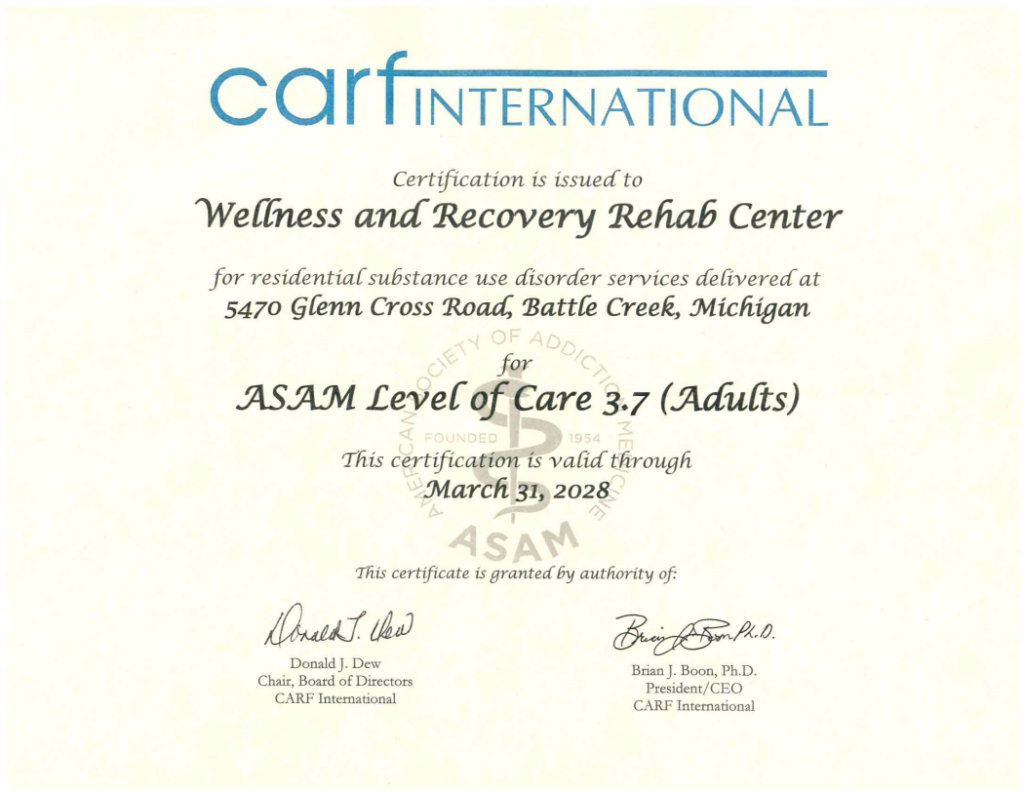Inpatient treatment provides a chance to step away from the chaos of daily life and focus entirely on rebuilding a healthier, more fulfilling future.
If you’re searching for inpatient drug rehab Ohio options, we’re here to help you find the support you deserve, even if it means traveling for life-changing care.
Recovery isn’t just about breaking free from addiction; it’s about rediscovering hope, strength, and joy.
Inpatient rehab is more than just a treatment program; it’s a lifeline for those struggling with addiction. It’s a place where healing begins, free from the distractions and triggers of everyday life.
When searching for inpatient drug rehab Ohio options, it’s essential to know that this type of care is about more than just breaking free from substances.
Here’s what makes inpatient rehab so transformative:
The journey to recovery often starts with medical detox, a process that helps you safely withdraw from substances under the care of medical professionals.
Detox can be challenging, but in an inpatient setting, you’re never alone. With supervision, your safety and comfort are prioritized, giving you the strength to move forward.
In group therapy, you’ll connect with others who understand your struggles, creating a sense of community and shared strength.
Recovery doesn’t end when treatment does. That’s why inpatient rehab includes relapse prevention planning, helping you identify triggers, build healthy coping strategies, and create a support system to maintain your sobriety long after you leave the program.
Inpatient rehab is a chance to start fresh – to rediscover who you are and what you’re capable of.
If you’re considering inpatient drug rehab Ohio options, know that you’re not alone. Wellness and Recovery is here to walk beside you every step of the way.
Addiction doesn’t look the same for everyone, and neither does recovery. For some, outpatient programs provide the flexibility they need to heal. But for others, inpatient rehab is the best – and sometimes the only – path to lasting recovery.
If you’re wondering whether inpatient drug rehab Ohio programs might be right for you or a loved one, here are some signs that inpatient treatment could be the key to healing:
Inpatient drug rehab Ohio options are especially effective for severe addiction because it removes the distractions and triggers of everyday life.
It’s a chance to focus entirely on recovery, surrounded by a team of professionals who support you every step of the way. For those searching for inpatient drug rehab Ohio options, this level of care can be life-changing.
Through therapy, counseling, and holistic approaches, individuals can begin to heal their bodies, minds, and spirits.
Choosing the right inpatient rehab program is one of the most important decisions you’ll make on your journey to recovery. It’s not just about finding any facility – it’s about finding a place where you feel safe, supported, and understood.
For those searching for inpatient drug rehab Ohio programs, there are several key factors to consider to ensure you’re choosing the best fit for your needs.
The first step in finding a reputable program is to ensure the facility is accredited and licensed. This means the program meets high standards of care and is staffed by qualified professionals. Accreditation is a sign that the facility prioritizes your safety and well-being.
Not all rehabs are equipped to handle every type of addiction. Whether you’re struggling with alcohol, opioids, stimulants, or other substances, it’s crucial to choose a facility that specializes in treating your specific needs.
Many individuals with addiction also face co-occurring mental health challenges. Look for programs that offer dual diagnosis treatment or trauma-focused care. These specialized approaches address both addiction and underlying mental health issues, providing a more comprehensive path to healing.
Recovery is about more than stopping substance use – it’s about healing the whole person. Look for programs that use a mix of evidence-based therapies and holistic approaches. This combination ensures that your treatment plan addresses your whole self.
While there are excellent inpatient drug rehab Ohio options, some individuals choose to travel to nearby states, like Michigan, for specialized care.
Traveling for treatment can offer a fresh start, free from the triggers and stressors of home. It also allows access to programs providing unique therapies, higher levels of care, or a more personalized approach.
Wellness and Recovery, located in Michigan, welcomes individuals from Ohio and Indiana. Our programs are designed to meet you where you are, offering compassionate, holistic care that addresses the whole you. If you’re considering traveling for treatment, we’re here to help you every step of the way.
For those considering inpatient drug rehab Ohio options, understanding the treatment process can help you feel more prepared and confident about taking that first step.
While everyone’s inpatient rehab path will vary depending on their symptoms, the general process includes the following steps:
The journey begins with a comprehensive assessment. This is where the treatment team gets to know you – your history, your struggles, and your goals. It’s not just about understanding your addiction; it’s about understanding you.
This information is used to create a personalized treatment plan that addresses your specific needs, ensuring that your care is as unique as your story.
For many, the next step in treatment is medical detox. Detox can be physically and emotionally challenging, but in an inpatient setting, you’re never alone. With 24/7 medical supervision, your safety and comfort are prioritized.
Medications may be used to ease withdrawal symptoms, and you’ll have access to emotional support to help you through this critical phase.
Recovery doesn’t end when you leave inpatient rehab. That’s why aftercare planning is a crucial part of the process. Your treatment team will work with you to create a plan for transitioning back to everyday life.
This may include outpatient therapy, support groups, and other resources to help you stay on track.
At Wellness and Recovery, we believe that recovery is a lifelong journey. If you’re searching for inpatient drug rehab Ohio options, we’re here to support you.
When it comes to overcoming addiction, the right environment and support can make all the difference. At Wellness and Recovery, we provide high-quality inpatient rehab services to help you heal.
Our Michigan-based facility offers a dedicated, supportive space where you can focus entirely on your recovery.
Inpatient rehab at Wellness and Recovery means stepping away from the chaos of everyday life and into a space where healing is the top priority. Our facility is designed to provide comfort, safety, and peace, allowing you to focus on your recovery without distractions.
We believe in treating the whole person, not just the addiction. Our programs combine evidence-based therapies with holistic practices to address every aspect of your well-being.
The inpatient drug rehab Ohio program at Wellness and Recovery uses a blend of proven therapies and holistic practices to create a personalized treatment plan for each individual.
Here are some of the approaches you can expect us to utilize in treatment:
This combination of approaches ensures that your treatment plan addresses not just the symptoms of addiction but the underlying causes as well.
If you’re ready to take the first step toward recovery, we’re here to help. Starting an inpatient drug rehab Ohio program can feel overwhelming, but you don’t have to do it alone.
Here’s how to get started:
For those searching for inpatient drug rehab Ohio options, we’re here to help, even if it means traveling to our Michigan facility. Recovery is possible, and it starts with taking that first step.
Don’t face this alone. Let’s take this journey together and build a brighter, healthier future.




